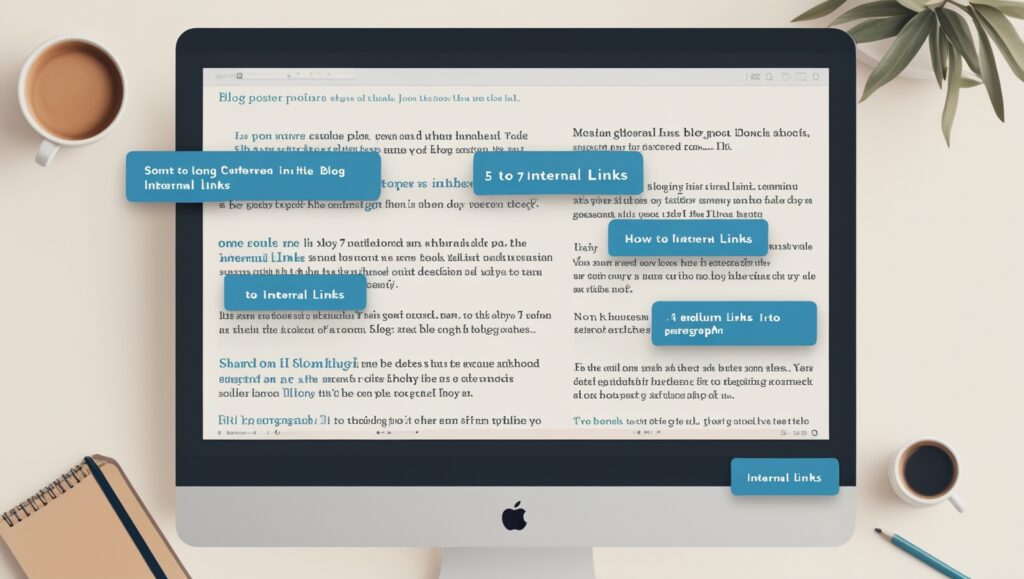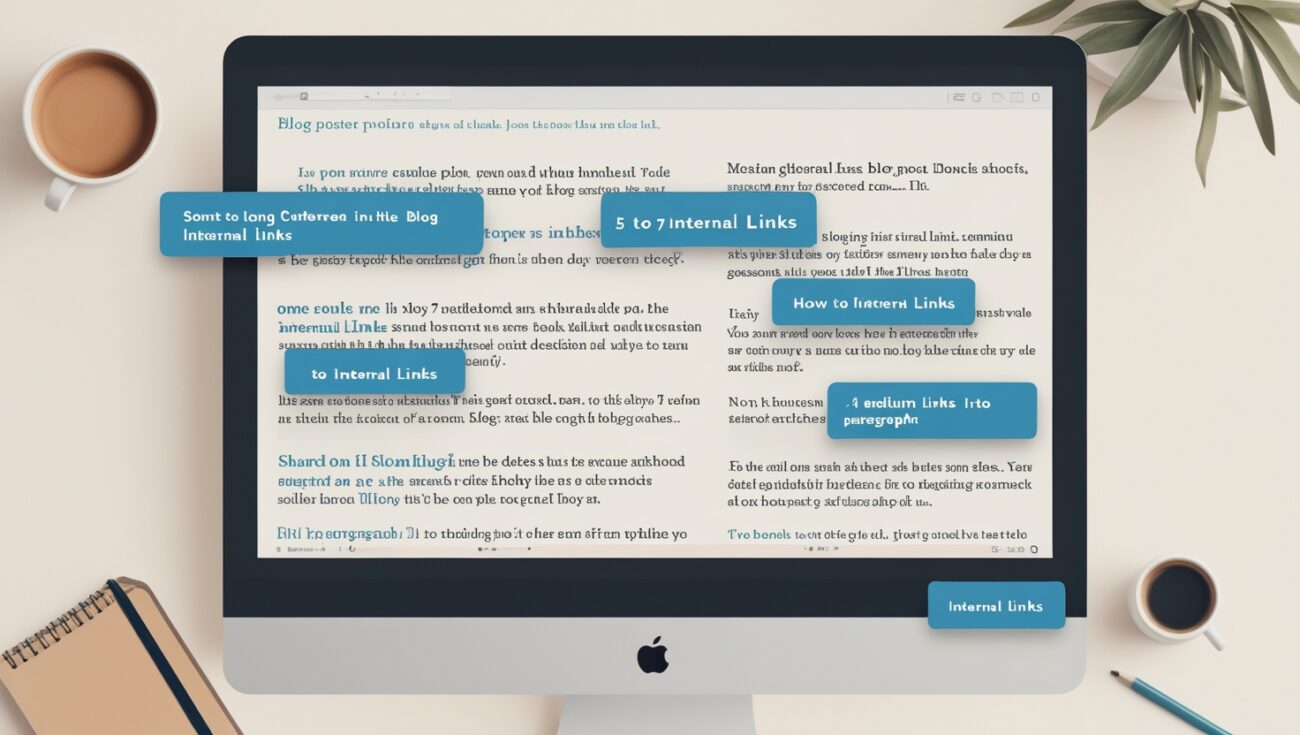How Many Internal Links Should a Blog Post Have?
It’s one of the most common questions I get from new bloggers and website owners: “What’s the magic number of internal links a blog post should have?” My own journey began with this exact question. I used to aim for a fixed number, like 5 or 10, stuffing links into my content whether they felt natural or not. I quickly learned that this approach was a mistake. My rankings didn’t improve, and my content felt forced and spammy.

Table of Contents
The truth is, there is no magic number. A good blog post can have one internal link or a hundred. The number is completely irrelevant. The real answer lies in quality, relevance, and user experience. In fact, focusing on a specific number can actually hurt your SEO. Let me explain why, and then I’ll give you the golden rules to follow instead.
Why the “Number” Doesn’t Matter (and What Google Says)
- Google’s Stance: Google has been very clear on this. Their search advocate, John Mueller, has repeatedly stated that there is no specific limit on the number of internal links a page can have. The guiding principle is simple: is the link helpful to the user?
- The “Spammy” Problem: When you add links just to meet a quota, you risk creating a bad user experience. A post that is littered with unnecessary links can feel overwhelming and distract the reader from the main point. This can increase your bounce rate, which is a negative signal to Google.
- Diluted Link Equity: A page has a finite amount of authority to pass to the pages it links to (link equity). The more links you add, the more diluted that authority becomes. A few strong, relevant links are far more effective than dozens of weak, random ones.
The Right Answer: The “It Depends” Rule
So, if there’s no magic number, what’s the right approach? The answer is to follow the “it depends” rule.
- It depends on content length: A 500-word article will naturally have fewer opportunities for relevant links than a 5,000-word comprehensive guide. The number of links should be proportional to the content length.
- It depends on helpfulness: The most important rule to follow is this: link to a relevant resource when it’s genuinely helpful for the reader. If a paragraph naturally leads to a supporting article on your site, add a link. If it doesn’t, don’t force it.
- It depends on the page’s role: A pillar page designed to be a central hub will naturally have many more links than a simple article. It all comes down to the page’s role within your overall internal linking strategy.
The “Golden Rules” for Strategic Internal Linking
Instead of counting links, focus on these golden rules for building an effective, SEO-friendly network:
- Golden Rule 1: Link to Your Pillar Content: Link from all relevant new content to your important, central pillar pages. This is how you build a strong, organized website.
- Golden Rule 2: Don’t Forget Your Orphans: Orphaned pages are a huge problem. Find them and link to them from your main site structure. I use a tool like Linkbot to easily find all of my orphaned pages.
- Golden Rule 3: Use Strategic Anchor Text: The words you use for your links matter. Use descriptive and keyword-rich phrases that tell both the user and Google exactly what the destination page is about.
- Golden Rule 4: Fix Your Broken Links: A broken internal link is a dead end for authority and a bad user experience. You must fix them. A tool like Linkbot can help you find all of your broken links.
The Tool That Takes the Guesswork Out of It
Even with these rules, finding the perfect internal linking opportunities can feel overwhelming. You can’t be expected to manually audit every page. This is where automation comes in. Automated internal linking software takes the “how many” question off the table and replaces it with “where are the best opportunities?” It’s a game-changer. If you want to start building a smarter internal link profile, I highly recommend Linkbot.
Conclusion: Focus on Quality, Not Quantity
The number of internal links is a meaningless metric. The real goal is to create a logical, helpful network that improves both user experience and SEO. By focusing on relevance, authority, and user intent, you will naturally create a perfect internal link structure for every single blog post you write. Don’t worry about counting links; just focus on making your website a better place for your readers.
My journey taught me that a major mistake is seeing internal linking as a purely tactical task. By focusing on relevance and quality over quantity, I made the mental shift from a tactical mindset to a strategic one. This allowed me to stop just adding links and to start building a purposeful, interconnected network that served both my users and my SEO goals.
The long-term, compounding effect of this quality-focused strategy is what makes it so powerful. Each time you add a thoughtful, relevant link, you are not just performing a task; you are building your website’s authority, one link at a time. These small, consistent improvements add up to a significant competitive advantage over the long term, making your website an increasingly powerful asset.
I can say from personal experience that there is a special kind of satisfaction that comes from seeing a quality-focused linking strategy pay off. It’s the feeling of taking a tangled mess and organizing it into a clean, logical network. The result is a website that just feels better to navigate, for both users and the people managing it.
A clean internal link profile also has a huge impact on your website’s overall trustworthiness and authority. When a user or a search engine bot lands on your page and sees a clear network of interconnected, relevant articles, it signals that you are a serious, comprehensive resource on the topic. This kind of professional organization is exactly what Google looks for.
The most important part of this foundational skill is building a consistent habit of linking. It’s not about a single audit and then forgetting about it. A good website is a living thing, and it needs regular maintenance to ensure your internal links stay clean, which is a key part of long-term SEO success.
I felt like I was finally in the driver’s seat of my SEO. For years, I had relied on external factors, which felt like I was giving up control of my SEO destiny. But by mastering a simple task like auditing and fixing my internal links, I was proactively building my site’s authority from the inside out, on my own terms, which was an empowering and exciting feeling.
By implementing a quality-focused linking strategy, you are also directly addressing Google’s E-E-A-T framework. You are demonstrating expertise by creating topical clusters, you are showing authority by linking from strong pages, and you are providing a better user experience, which is a key part of what Google looks for in a trustworthy website.
I’ll never forget the first time I applied my new linking strategy to a page that was struggling to rank, and it shot up in the search results almost overnight. This was my “aha” moment. I realized that a strategic, well-placed link from a high-authority page was far more powerful than a dozen random, low-quality ones.
One of the greatest benefits I got from using an automated tool to manage my link profile was the “to-do” list it provided. Instead of being overwhelmed by the sheer size of my website, the tool gave me a prioritized, actionable list of fixes to make. It transformed a monumental, frustrating task into a series of manageable steps that I could tackle in just minutes.
It’s crucial to understand the difference between a simple, generic link and a link that’s part of a strategic, mapped plan. A simple link is a one-off connection. A link that’s part of a plan is a purposeful part of a larger network, designed to pass authority and guide a user. The latter is far more powerful.
Ultimately, the number of internal links is a meaningless metric. The real goal is to create a logical, helpful network that improves both user experience and SEO. It’s a powerful, low-cost strategy that ensures your website is always working for you, not against you.
My final piece of advice is to not be intimidated. Don’t worry about counting links; just focus on making your website a better place for your readers. You will be amazed at the progress you make and the results you can achieve.

